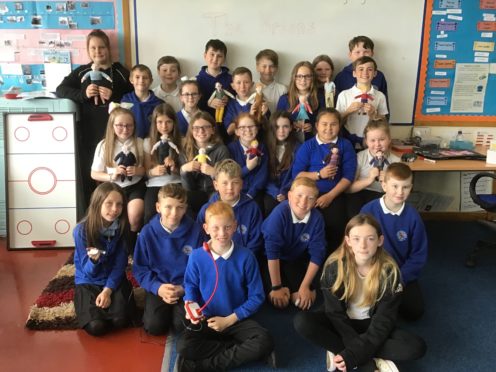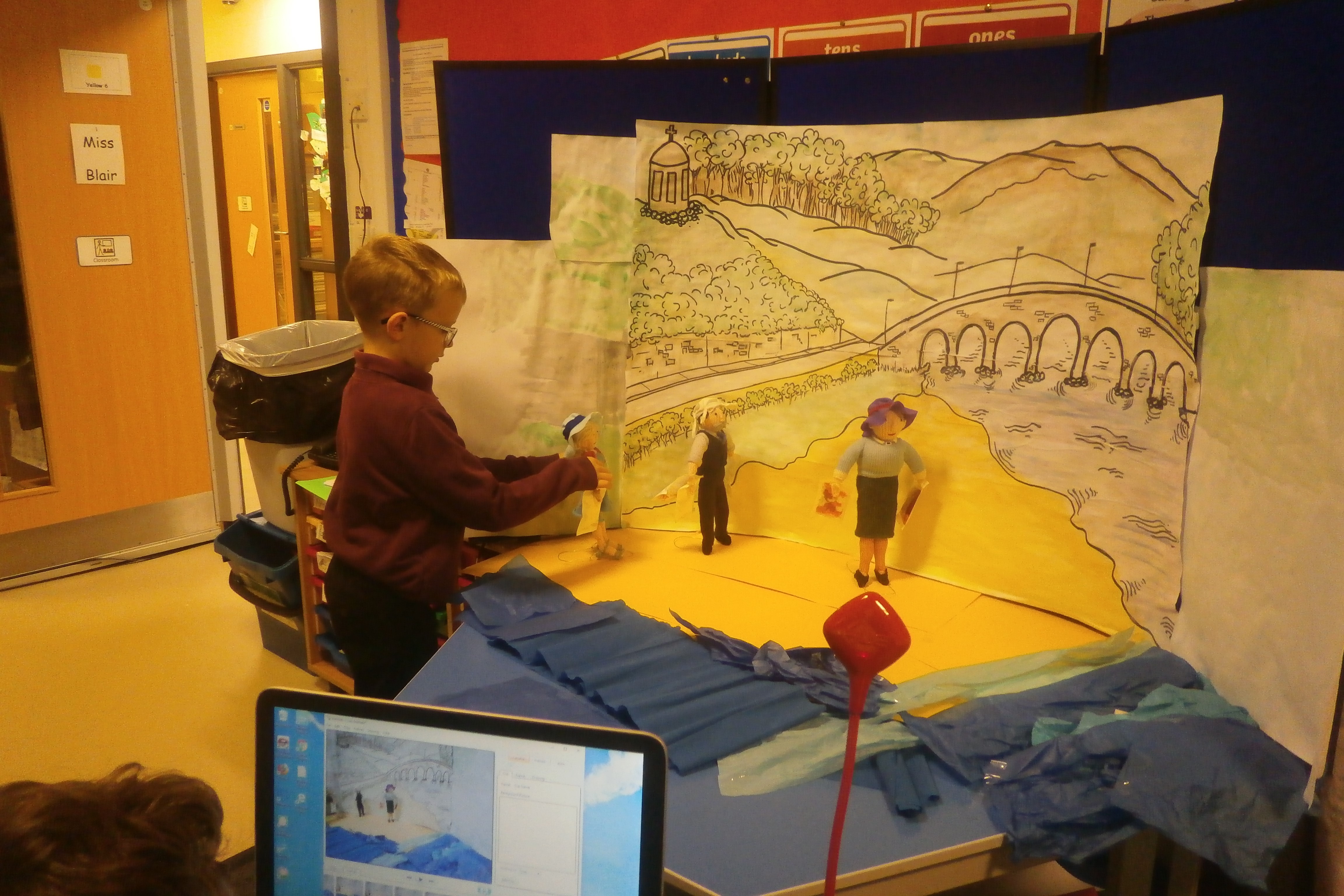
Pupils from two schools in the north of Scotland have created a special animation of The Broons with a very important message.
Knitmare on Glebe Street, by P5, P6 and P7 children from Macduff Primary School and Banff Primary School in Aberdeenshire tells the story of the Sunday Post favourites discovering how marine pollution is drastically affecting sea life and the ocean.
Created with the help of The Broons and Oor Wullie enthusiast, teacher Dorothy Reid, the film has been made using stop-animation techniques and specially-made knitted puppets of the Broons characters.
The 18-minute long film came into being after Dorothy, 66, was moved by BBC documentary, Drowning in Plastic, and conveyed to her class the devastating results of plastic pollution in our seas.
It’s the fourth knitted Broons animation created by the teacher and her pupils over the past five years, all featuring valuable life lessons.
“This all started last October with my watching Drowning in Plastic,” she told The Sunday Post.
“I spoke about how it had affected me and showed the children in my Enhanced Provision class some photos of the poor marine creatures.
“One boy, Joshua, suggested we make another animation with The Broons.”
The enthusiasm from children at Banff Primary soon translated to a neighbouring school, where Dorothy found more recruits for the film’s creation.
“In January, I started teaching one day a week in Macduff Primary, with a P6 class.
“I spoke about marine plastic pollution to the children, showed the parts of the animation that the children in Banff had already filmed and asked if they would like to be involved in the project.
“They were instantly engaged. Their class teacher told me the next day that the Broons and the animation were the main topics of conversation.”
Knitmare on Glebe Street has been viewed on YouTube by audiences as far flung as New Zealand, and is to be used by teachers in both Australia and Croatia as a teaching tool.
It was scripted and narrated by the children in Doric, the recently acknowledged language of the North East of Scotland.
The film starts with The Broons doing everything wrong when it comes to plastic, throwing all their rubbish into the sea at Banff Bridge.
Soon after however, Maw has a nightmare, all her nearest and dearest are subjected to revenge for their misuse of plastic and the damage it is doing to sea life.
Once Maw tells her family about her nightmare, Paw, Grandpaw, Hen, Joe, Maggie, Daphne, Horace, the twins and the bairn know they have to change their ways.
They find lots of alternatives to plastics for use in their daily lives and even the puppet version of David Attenborough – who makes a cameo appearance – is happy with them.
“We researched a wide range of topics concerned with the environment and pollution to make the film,” continued Dorothy.
“As well as the children learning about each of The Broons characters, we learned about how the Queen has banned all single-use plastics in her palaces, how oil was formed, the history of the local dumping of rubbish and children’s rights when it comes to a clean environment.
“We also researched Robbie Burns and decided that if he were alive today he would definitely be writing about plastic pollution.
“One boy, Hamish, was so inspired by this, he wrote the poem that Robbie recites in the animation – ‘To the Broons.'”
And like The Broons, the discoveries made have been fully embraced by the children.
“The chidren have had enormous fun making the entire animation and are also now very aware that their voices can help make a difference to their environment,” said Dorothy.
“The animation was also entered into the GREC Anne Frank Awards in Aberdeenshire where everyone is a winner, so that was lovely.
“When they’re older and have children of their own, they will look back on this entire project and see the different, cleaner world they helped create.”
“I really pray that it’s not the alternative!”

Enjoy the convenience of having The Sunday Post delivered as a digital ePaper straight to your smartphone, tablet or computer.
Subscribe for only £5.49 a month and enjoy all the benefits of the printed paper as a digital replica.
Subscribe